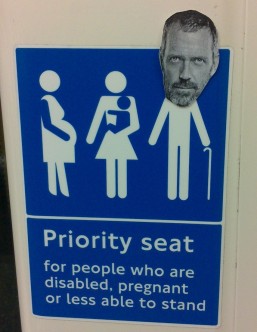Programmes and initiatives are prone to fail. The best way to succeed is through rigorous thinking and relentless attention. This is hard. Getting an organisation do so is the mark of a modern leader.
Management fads. IT systems. Training.
What do these have in common?
Organisations deploy these things when they need to do something better or they need to do something new. Often, these are dressed up as ‘programmes’ or ‘initiatives’.
And they usually fail.
Why?
Two reasons.
First, initiatives lead organisations to stop thinking.
“We don’t have to worry about our problem,” goes the organisational line, “because my new management fad / IT system / training programme is going to fix it for us.”
Wrong. No matter which of these things we do, the problem will still be there.
If we are lucky, our initiative will have given us a tool or an approach or a data set that may make solving the problem easier. that’s all.
Second, they divert attention.
Management fads / IT systems / training programmes tend to be big and visible. Once committed, an organisation’s focus usually shifts from ‘solving the problem’ to ‘delivering the programme’.
This is normal – and almost always a mistake.
The programme is not the problem. These are not the same thing.
When the programme is over, what do you have? Some new management buzzwords or some new IT kit or some nice training materials and a new vocabulary, that’s all. Delivered on time and under budget (if you’re lucky).
The problem? Typically, it’ll still be there.
So what’s the solution?
Only one: an iron will and a relentless focus on solving the problem, not just completing the programme.
THIS IS HARD.
Because it means making our organisations think. Think with rigour. Think deeply. Sometimes for quite a while. This is painful and difficult to do.
And, once we have done this thinking, we need to do the the tough bit. We have to concentrate and pay attention to do the thing we have decided to do. For a long time. Until we solve the problem or we learn that we need to do something else.
This is even harder to do and much more difficult. Hence the need for an ‘iron will’.
Successful, modern leaders are, I believe, those who can get their organisation to do these things relentlessly. They may do other things, sure, but their success stands or falls by their ability to have their organisations think hard and pay attention to the things that matter.
If we don’t think hard, paying attention to a problem is like looking at a house burning down, without working out that the right thing to do is call the fire brigade.
On the other hand, thinking without paying attention to the solution is like knowing we need to call the fire brigade, but allowing ourselves to get distracted before picking up the phone.
Either way, our house burns down.
Yes, of course, we may well need some management tools or some IT or some training.
But let’s not confuse these things with the solution to our problem.
(Image: House Fire in Dillon Beach by Momboleum, https://www.flickr.com/photos/momboleum/3091269507/in/set-72157610892145416, used under creative commons license)
(A version of this article was posted in my LinkedIn feed: https://www.linkedin.com/pulse/programme-problem-mike-bird?trk=object-title)




